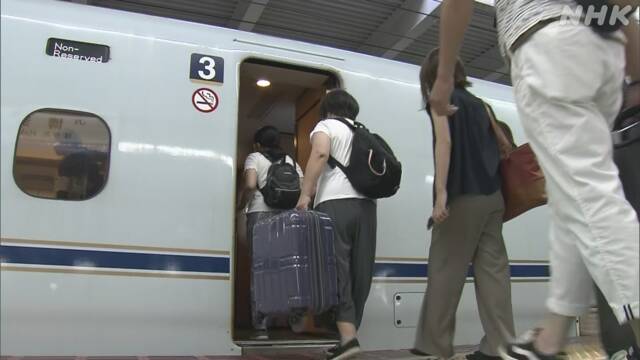While the number of new coronavirus infections continues at a record high nationwide, the U-turn rush of this year's Obon festival, which is not accompanied by restrictions on movement, has reached its peak for the first time in three years, and congestion continues.
According to the Japan Road Traffic Information Center, expressways have been heavily congested on inbound lines in various places since the afternoon.
As of 5:00 p.m., both traffic jams are on the inbound line,
▽ 28 km from the vicinity of the Takasaka service area on the Kanetsu Expressway, ▽
19 km from the vicinity of the Kobotoke Tunnel on the Chuo Expressway,
▽ North of Tsuchiura on the Joban Expressway Starting near the interchange, it is 16 kilometers long, and is expected to continue until late at night on the 14th.
From around noon to late at night on the 15th,
heavy traffic is expected on the inbound line,
▽ 40 km from the vicinity of the Takasaka service area on the Kanetsu Expressway, ▽ 30 km from the vicinity of the Ayase Smart Interchange on the Tomei Expressway.
It has been.
According to JR companies, the number of Shinkansen reservations during this year's Obon period is only about 60% compared to the same period before the spread of infection, but it has increased compared to last year.
The 14th is the peak of congestion for the inbound train, and in the afternoon reserved seats are full on many trains such as the Tohoku Shinkansen and Akita Shinkansen.
On the 15th, there are more seats available than on the 14th.
On the other hand, according to airlines, the number of passengers on flights will be dispersed until the 16th, and it is expected that some flights from various places to Haneda Airport will be fully booked after the 15th.

